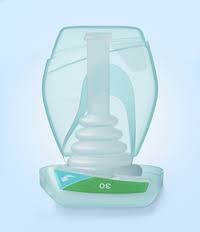The Conveen Optima sheath, used with a urine bag, provides a discreet, secure and reliable solution. It offers all day protection and is inconspicuous, so no-one needs to know you're wearing it. With Conveen you'll have the confidence to get back to doing what you love most in the company of your friends and family.
What is a sheath?
A sheath is specially designed for men to provide a secure and discreet way to manage male urinary incontinence. It is a soft, flexible sleeve that looks like a regular condom and is rolled on to the penis in the same way. On the tip of the urisheath there is an outlet that connects by tube to a urine collecting bag.
A urine bag is used with the sheath to collect and store urine. It attaches securely to the sheath via a tube and is normally worn strapped to the leg. When the bag becomes full, it is simply emptied in the toilet. Urine bags are available for day and night use in different sizes for different levels of incontinence. As the bags are worn under your clothes (day use), they are highly discreet so no-one has to know you have continence problems.
What are the benefits of sheaths and urine bags?
Sheaths and urine bags are a discreet alternative to protective underwear and pads. Most men find they fit easily into their daily routine. The sheath can typically be worn for up to 24 hours and the bag is simply emptied into the toilet when necessary.
What are the alternatives?
Pads and protective underwear are commonly used to manage incontinence. They are worn under your clothes and the absorbent material soaks up the urine. Pads and protective underwear can be useful for mild to heavy urinary incontinence. However, they can be bulky and need to be changed frequently to avoid problems with odour and skin rashes.
Does one size fit everyone?
All men are different so a urisheath like Conveen Optima comes in 5 different sizes and 2 different lengths to ensure the perfect fit. Conveen also has a range of urine bags to manage different levels of incontinence, as well as a night-time bag.
Are sheaths reliable?
When used correctly, a sheath connected to a collecting bag is a very reliable and effective way to manage incontinence. Always ensure you use the right size to minimise the risk of leakage.
Do I need training to use the Conveen Optima sheath?
It will take a bit of practice to familiarise yourself with changing the sheath and collecting bag. However, most men soon find that it fits easily into their daily routine.
How often should I change the sheath?
Each sheath can be worn for up to 24 hours and more frequent changing is not recommended. A sheath is intended for single use only and should be disposed of following use. For optimal hygiene and fitting, never use a sheath more than once.
How do I empty the urine bag?
When the urine bag is approximately two-thirds full, it needs to be emptied. You do this by simply opening the valve at the bottom of the bag and emptying its contents into the toilet.
What about during the night?
A good night’s sleep is important for everyone. For use during the night, a larger urine bag is available. This bag has a longer tube and is strapped to your bedside instead of your body for comfort. This allows you, and your loved one, to sleep undisturbed through the night.